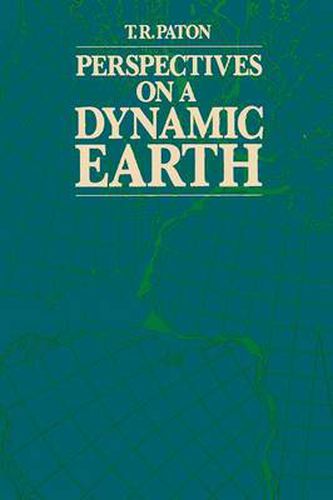Readings Newsletter
Become a Readings Member to make your shopping experience even easier.
Sign in or sign up for free!
You’re not far away from qualifying for FREE standard shipping within Australia
You’ve qualified for FREE standard shipping within Australia
The cart is loading…






This title is printed to order. This book may have been self-published. If so, we cannot guarantee the quality of the content. In the main most books will have gone through the editing process however some may not. We therefore suggest that you be aware of this before ordering this book. If in doubt check either the author or publisher’s details as we are unable to accept any returns unless they are faulty. Please contact us if you have any questions.
This book is an attempt to put into practice these precepts of Popper and Koestler as far as they can be applied to the Earth sciences at an elementary level. It is felt that the time is ripe for such a presentation, for the revolution that has taken place over the past 20 years within the Earth sciences has made more people directly aware of the way science works and of the necessity of knowing its history to achieve a full understanding of the problems involved. Emerging from the revolution has been the immensely unifying and extremely fruitful concept of plate tectonics, and developments leading to its establishment form the core of the book (Chs 4, 5 & 6). However, to see plate tectonics in context, it is necessary to look at what happened before, and this is done in the first three chapters. Chapter 1 is concerned with the development of ideas about the shape, size and mass of the Earth, which led to broad concepts about the Earth’s structure and finally to a model of a cooling, contracting Earth, capable of explaining geological history and the major topographic features of the Earth. Chapter 2 goes on to show how even though the acceptance of this idea gradually broke down in the first half of the 20th century, possible alternatives, which are now at the core of plate tectonics, were also rejected.
$9.00 standard shipping within Australia
FREE standard shipping within Australia for orders over $100.00
Express & International shipping calculated at checkout
This title is printed to order. This book may have been self-published. If so, we cannot guarantee the quality of the content. In the main most books will have gone through the editing process however some may not. We therefore suggest that you be aware of this before ordering this book. If in doubt check either the author or publisher’s details as we are unable to accept any returns unless they are faulty. Please contact us if you have any questions.
This book is an attempt to put into practice these precepts of Popper and Koestler as far as they can be applied to the Earth sciences at an elementary level. It is felt that the time is ripe for such a presentation, for the revolution that has taken place over the past 20 years within the Earth sciences has made more people directly aware of the way science works and of the necessity of knowing its history to achieve a full understanding of the problems involved. Emerging from the revolution has been the immensely unifying and extremely fruitful concept of plate tectonics, and developments leading to its establishment form the core of the book (Chs 4, 5 & 6). However, to see plate tectonics in context, it is necessary to look at what happened before, and this is done in the first three chapters. Chapter 1 is concerned with the development of ideas about the shape, size and mass of the Earth, which led to broad concepts about the Earth’s structure and finally to a model of a cooling, contracting Earth, capable of explaining geological history and the major topographic features of the Earth. Chapter 2 goes on to show how even though the acceptance of this idea gradually broke down in the first half of the 20th century, possible alternatives, which are now at the core of plate tectonics, were also rejected.